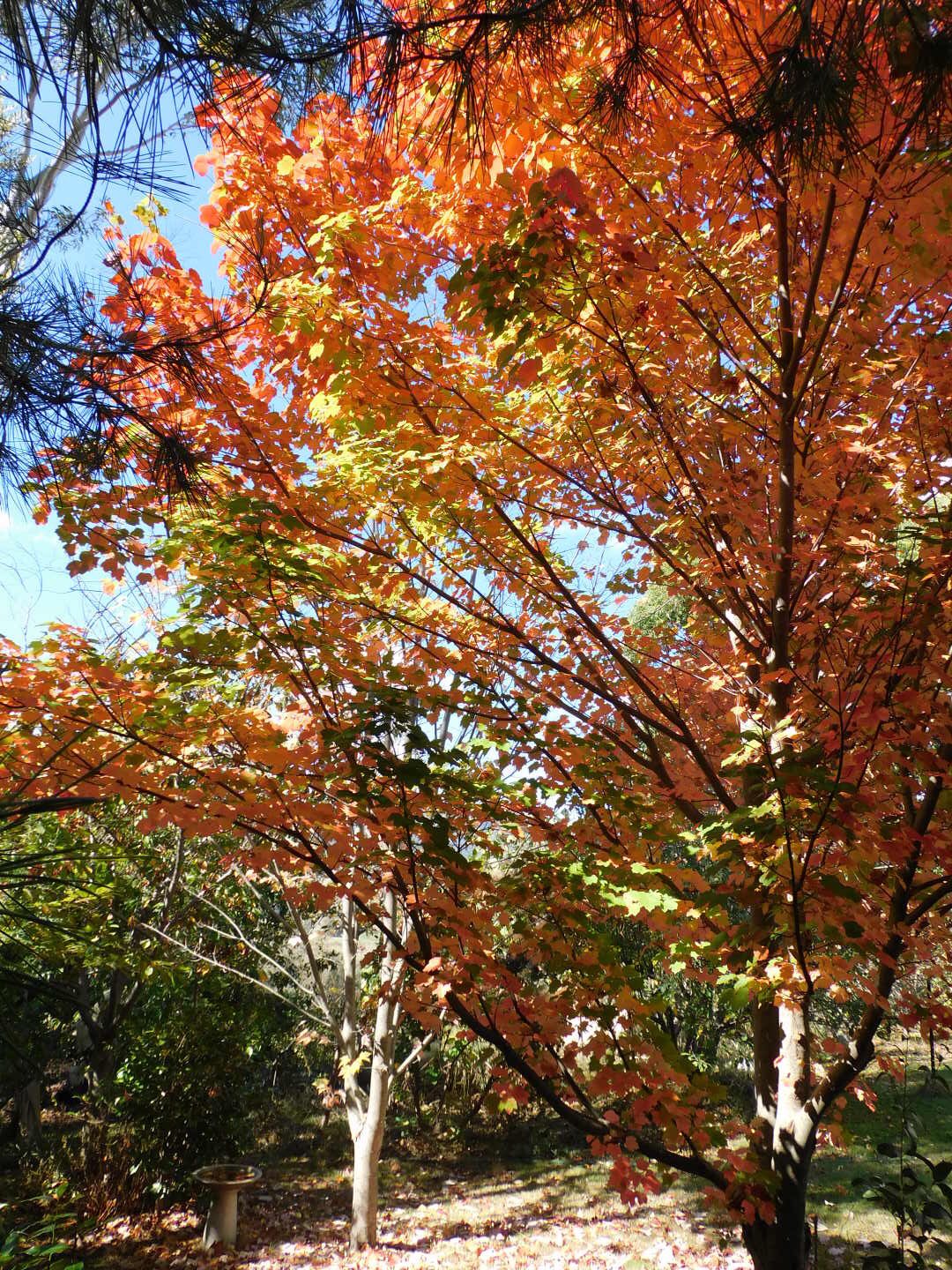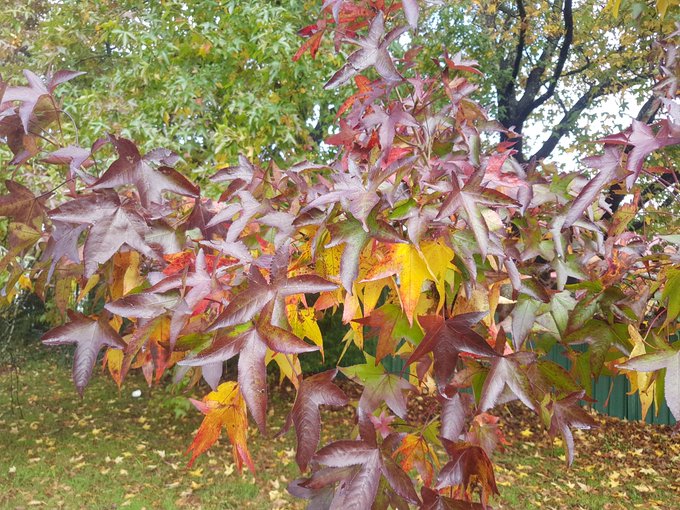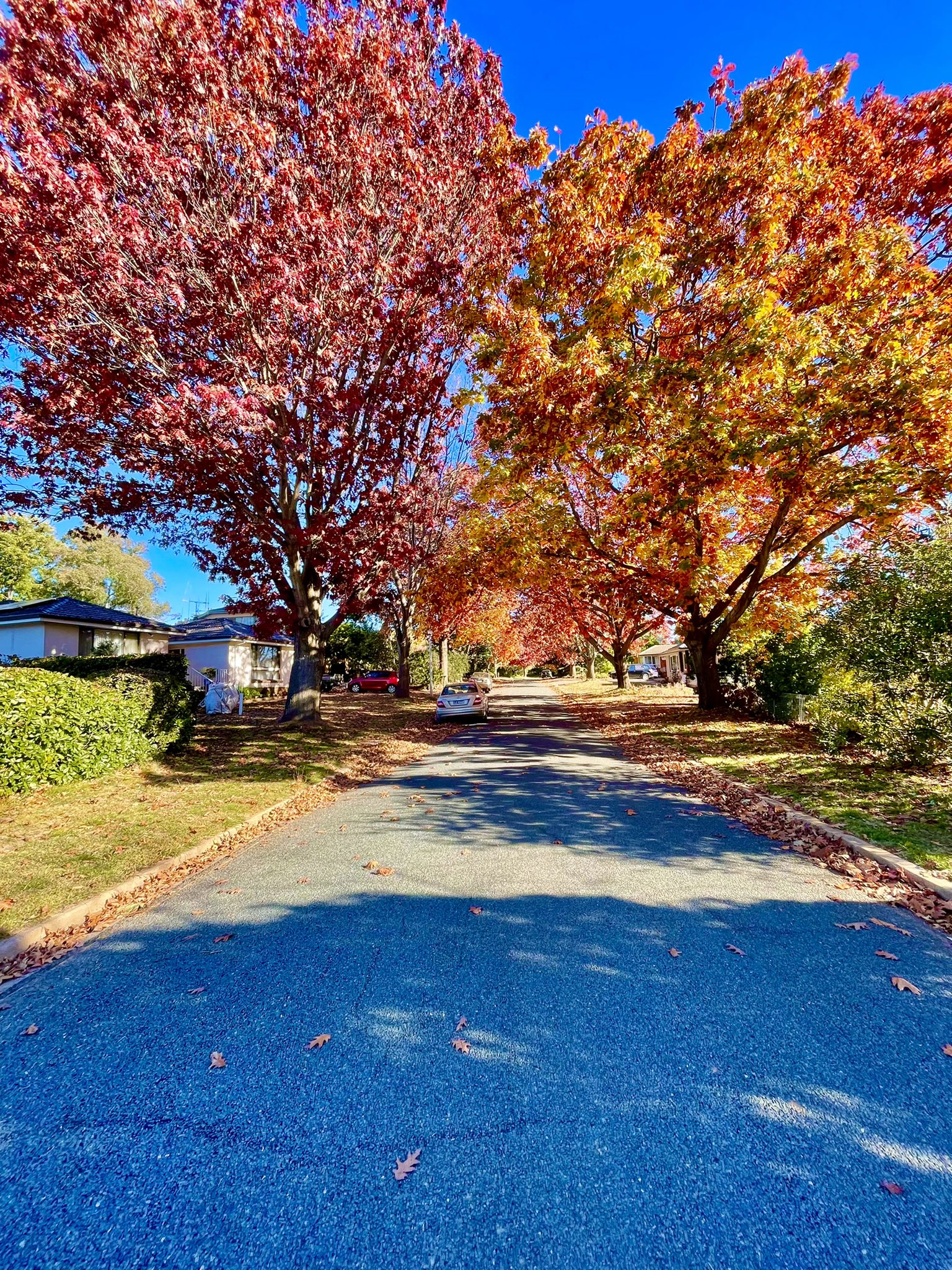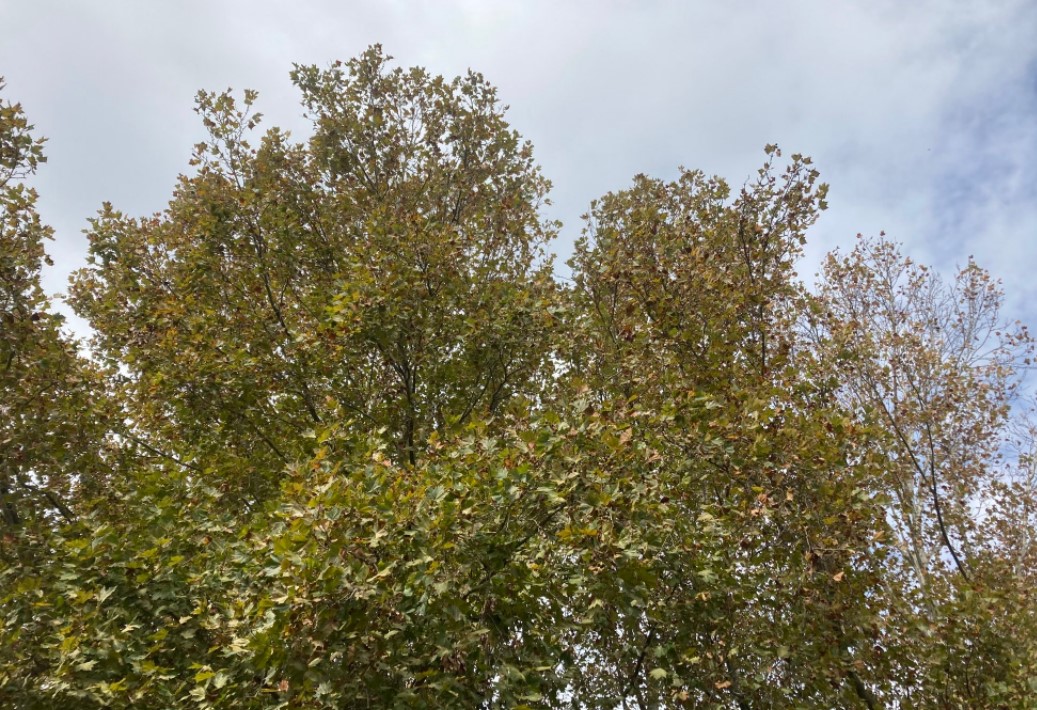Why do some autumn trees blaze while others fizzle?
It's late April, which means the spectacular display of autumn foliage is well underway in many parts of southern Australia.
But not all autumn displays are equally spectacular, and we'll explain why in a moment. First, here's some eye candy for the leaf-peepers among you!
Here's a lovely Canadian maple courtesy of Weatherzone reader Gordon Kerry in NE Victoria.

And here's a lovely Liquidambar, a tree native to North and Central America, from Weatherzone reader Rob Mann in Wentworth Falls, NSW.

No collection of spectacular Aussie autumn colours would be complete without a Canberra streetscape. This one comes via Canberra local and WZ enthusiast Julian Abbott.

Meanwhile in places like Sydney where European trees occur in parks and gardens, their colours are rarely quite so spectacular. Leaves that would turn golden yellow or blazing red in colder climes kind of just go brown, like these ones in the park near your correspondent's office.

Why?
The main trigger for colourful autumn leaf displays and the shedding of leaves is the seasonal change in day length. This drives the depletion of green chlorophyll in leaves, with the leaves eventually falling and nutrients sent to the roots, so the tree can store them until warmer weather returns.
As chlorophyll breaks down in leaves, the green colour disappears, replaced by more fiery tones.
In some cases, yellow and orange pigments known as carotenoids take over (yes, carotenoids are what make carrots orange, as the name suggests). In other plants, pigments called anthocyanins accumulate in the leaves. These produce the darker reds and purples.
But shorter day length is not the only factor at play. Several other factors can affect the splendour (or otherwise) of an autumn display, including:
- Light intensity affects anthocyanin production, which means sunny autumns will tend to produce richer colours.
- Temperature is a factor, as cooler nights trap sugars in the leaves, making for more spectacular displays. That mostly accounts for the brownish leaves of your typical deciduous autumn tree in places like Sydney that might turn bright red or yellow further south or at higher elevations.
- Soil moisture, or lack of it, is also a factor. In times of drought, imported deciduous trees in Australia have been known to show no colour at all.
There is growing evidence that climate change is delaying and even dulling colourful autumn displays, although the effects of a warming climate vary between species. For example, the colour change in Fagus is delayed by 6-8 days per degree (°C) above usual for the time of year, according to this story.
What's "Fagus", you ask?
It's the Latin word for beech tree, and we refer you to the story we wrote last autumn about Nothofagus Gunnii, aka the deciduous beech, which is Australia's only cold climate winter-deciduous tree.

Image: Yellow beech on Crater Lake, Tas. Source: Perry Mason.
Now that's what we call gold, gold, gold for Australia!